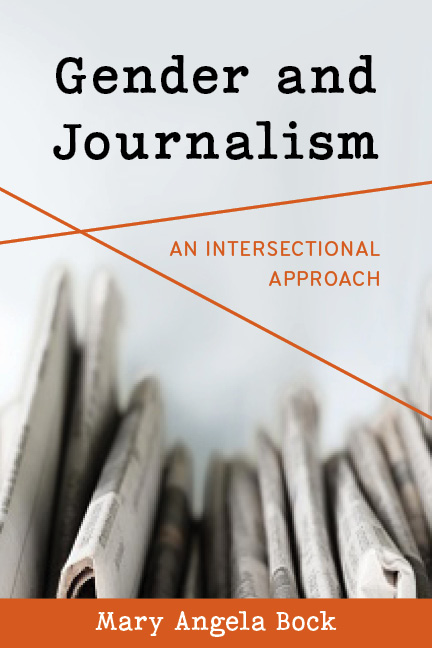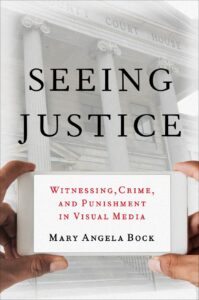Coming Soon: Gender and Journalism: An Intersectional Approach

(2023, Rowman and Littlefield)
Gender and Journalism introduces the history of the struggle for gender equality in news. The textbook provides foundational concepts, theories, and methods through which students can explore the role gender has played in news media. Gender is just one facet of our humanity, yet it has a tremendous effect on the people working in journalism; the subjects and framing of the stories they tell; and ultimately the people who consume those stories.
The textbook is designed to humanize media institutions and highlight the lives of individuals who have worked as writers, journalists, activists and media producers. While media are often considered as a giant, single entity, they are a diverse group of organizations staffed by individuals living in a world full of gender stereotypes and expectations. Promoting media literacy, the book empowers students to look at the factors that influence what we see and read in the news.
While the book centers on women’s experiences in the United States, it also considers the political, economic, and cultural aspects of gender and journalism globally. It also addresses experiences of LGBTQ+ and non-white individuals to give an intersectional frame of reference.
The book covers the essential history of newsroom diversity, focusing on the U.S. case, from the colonial era into the 21st century. It presents students with important concepts for thinking about gender in media, such as hegemonic masculinity, colorblind racism, infantilization and the double binds. Issues related to gender photojournalism, sports journalism, and broadcasting each receive chapter-level treatment.
SEEING JUSTICE: Witnessing, Crime, and Punishment in Visual Media

(2021, Oxford University Press)
Seeing Justice: Witnessing, Crime, and Punishment studies the way visual media produce representations of the criminal justice system as part of a larger social system. From the last legal hanging of the United States to contemporary spectacular trials to the amateur videos changing national conversations about race and equality, the book offers insight into the potential and limits of visual evidence.
With this book, I offer a theoretical model for understanding the way visual representations operate in today’s media ecology in contrast with the mass mediated systems of the past. I posit “embodied gatekeeping” as a concept to describe the way visual journalists must work within a system largely controlled by authorities in order to cover criminal justice events, and the physical nature of their work gives narrative advantage to those authorities.
This argument is based on assumptions long held by visual scholars: that images are constructions, and their meaning is contingent, but the constructed nature of photographs tends to be eclipsed by faith in the camera’s accuracy, and the work of human actors, who use their bodies in time and space to cover events, tends to be occluded by media organizations lauding the documentary perfection of a camera’s output. The result is a system that until now has tended to occlude injustice, especially injustice rooted in social inequality such as race, class and gender.
To advance this argument, I’ve studied cultural tropes such as perp walks and mug shots, situating such coverage as rituals enacted by journalists and court officers. With detailed descriptions of the way media work in concert with authorities to spectacular trials such as the George Zimmerman murder trial, the child-sexual abuse trial of Jerry Sandusky and the sexual assault trial of Bill Cosby.
Seeing Justice describes the way smartphone video disrupt the state-media information ecology, inspiring conversations in the public sphere about narrative, stagecraft, and the politics of voice and visibility. The book historicizes the cop-watching movement in the United States, calling attention to its dimensions beyond the visual as everyday people struggle for control of prosecutorial narratives and oppose the toxic masculinity of police culture. I created this video for ICA 2022 to demonstrate the power and limits of this disruption, using so-called “Karen videos.” These public shaming clips serve micro and macro social narratives and exemplify the intense emotional and phenomenological impact of video.
Yet as I argue, this disruption is not without limits, as video remains part of a larger discursive system. Coverage of prisons, the incarceration system and executions remain beyond reach for visual journalists, which keeps the American system’s extreme inequalities largely out of view.
The book concludes by invoking Amartya Sen’s capabilities approach to human rights by suggesting that the skills necessary to participate in today’s visual media sphere constitute a new form of literacy, that is, an essential democratic right.
One of the distinguishing aspects of this book is its reliance on ethnographic data —real world observation — of people who produce visual communication. I made many of the photographs in Seeing Justice as part of my observational research. I’ve studied court cases, crime scenes, cop-watching patrols and other sites of visual production first-hand. Seeing Justice is an academic project, but one that blends my more than 20 years’ experience as a television journalist to tell the story of visual communication as it pertains to crime, social justice, and the law.
